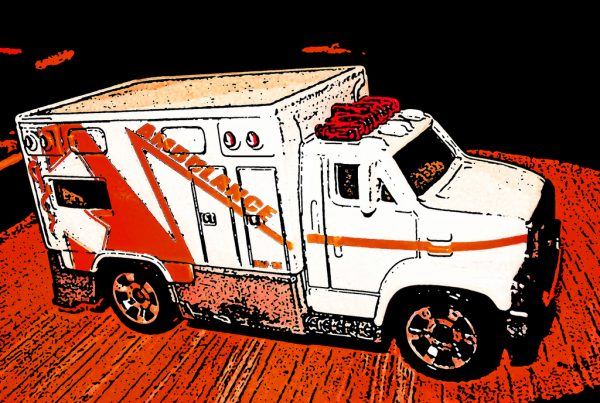Practices
To effectively control the cost of service operations and provide exceptional service to customers, non-emergency patient transportation companies are required to develop strong practices and to integrate these practices into their business processes. These practices help successful companies streamline and manage the service operation process with a stronger focus. As well, non-emergency medical transportation companies can establish and maintain a competitive advantage, and generate new and repeat business with the aid of fleet management software. The practices we outline below are best used in conjunction with a fleet management software service.
Develop a Plan
Non-emergency patient transportation companies should consider their service operations in the same way enterprises approach their factory or warehouse operations. Typically, enterprises set tightly engineered plans for their production lines and warehouse operations, and have specific tools enabling them to benchmark performance against those plans. These plans are based on well-researched granular, labour and activity standards and allow manpower and capital assets to be managed to optimal utilization. Non-emergency patient transportation companies are advised to adopt this thinking in regards to their service operations process, as it will keep the focus of operations on reducing costs and optimizing efficiency.
Analyze & Assess Information
With software solutions, companies can capture a base level of operating history, as this information will now be available to them. They will then have the capability to analyze data and assess which strategies are out of line with their needs or those of their customers, and where cost savings exist and are achievable. A technology solution with integrated business intelligence and reporting capability make this analysis easy and allows the information to be accessible by designated employees at all times.
Establishing Standard Operating Procedures
A thorough data analysis opens up companies to the development of plans against which performance can be measured. The best running service operations are those establishing engineered standards for every aspect of the process. Historical data will be used to identify and create best practices around activities such as load times, handling times for particular service types and trips.
Driver & Vehicle Management
The key asset in managing any route is the driver. Many companies focus only on the vehicle and not the driver, therefore only addressing part of the activities and costs associated with the process.
For example, while drive times may be separated into morning, afternoon and evening times, routine tasks undertaken by the driver before they are on the road –such as vehicle circle checks and loading activities – may not be factored in. Although these activities are important, they can be managed more effectively if the actual performance of these tasks is benchmarked and measured in order to get their drivers on the road faster.
Plan around the Customer
While every company wants an optimized route plan, the plan needs to be balanced to ensure routes and service times reflect customer needs and demands. For example, route plans may need to be adjusted to accommodate certain requirements: hospitals can only be accessed at specific times; customers who live in apartments may require special loading assistance; or customers may be used to the consistency of certain timed services.
By establishing best practices in developing route plans, non-emergency patient transportation companies can become more efficient in running their operations, narrow their time windows, and in doing so, improve their customer service levels.
Measure the Customer
Measuring customer performance can be valuable. Capturing customer history and exceptions, such as “no-homes” (when a passenger requests a trip and are not present at the scheduled time and location for pickup) or other problems, can highlight service problems. This enables non-emergency patient transportation companies to work with their customers to eliminate the problems and ensure better customer service.
Expect the Unexpected
Exceptions such as bad weather, traffic jams, and unexpected delays are all contributing factors in regards to keeping service on time. Since any scheduled trip plan has the potential to fall through, contingencies must be established. To provide the strongest customer service, organizations must have real-time visibility into these types of exceptions immediately as they occur.
Software solutions provide a high degree of visibility into service operations; dispatchers can proactively respond to service disruptions or delays, and immediately adjust a driver’s schedule accordingly. Customer service reps can resolve customer issues more effectively and in some instances, customers may receive notification of pending delays and updated estimated times of arrival.
Measure Performance against a Plan
Utilizing software solutions, non-emergency patient transportation companies can develop well-engineered plans to meet their service needs. Using detailed reports and business analysis tools, they can review their service history and assess activities by driver, area, and customer or any other grouping to improve planning, deployment and management of resources.
With an engineered plan in place, company leaders can assess planned versus actual load; drive and services times to increase driver productivity and accountability; measure on time service percentages; and determine where schedule and process adjustments need to be made to ensure customer requirements are met economically. With measuring the operations against engineered standards, they will be able to implement the operational changes required to increase asset utilization, improve profitability and ensure appropriate levels of customer service.
For more ways to reduce fleet costs, read more here and here.



